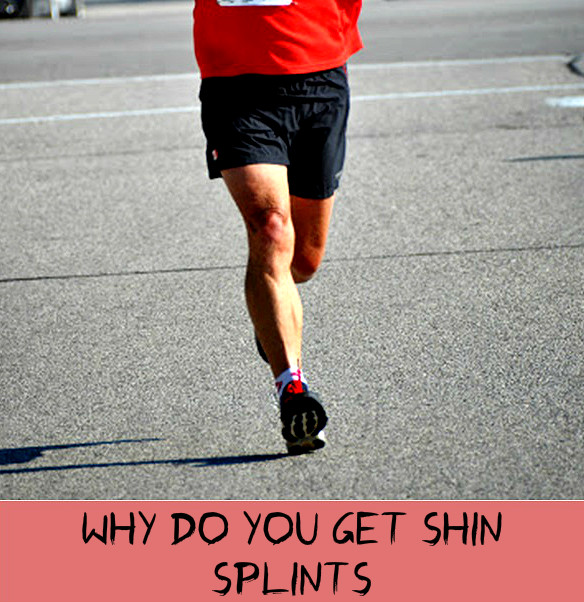We know that shin splints is all too common in runners, but we all want to know why do you get shin splints from running with a heel strike vs running with a forefoot strike?
A study by Vitasalo and Kvit (1983) found 2 major mechanical components of the heel strike running style that contributes to front of shin pain: a low angular displacement of the Achilles tendon before touchdown and a longer duration of pronation during stance.
Why Do You Get Shin Splints from Heel Strike Running
The researchers found that healthy endurance runners had a longer angular displacement value of the Achilles tendon prior to ground contact, suggesting that the torso (center of mass) had shifted posterior to a more anterior position over the foot before the touchdown phase. This also means that the foot landed closer to the hips which helps minimize the brake force.
In contrast, runners with a history of shin splints, who were also heel strikers, had a shorter angular displacement value of the Achilles tendon prior to touchdown, suggesting that the center of mass, or torso, remained well-behind the foot preparing to land, which would in turn increase the risk of braking at touchdown (because the center of mass is too far behind initial foot strike position).
Another contributing factor of running shin splints identified in the study was a long pronation period whereby endurance runners with a history of shin splints had a longer pronation duration than the healthy endurance runners. During running, the implications of a long pronation duration are clear in that excessive pronation increases stretch and eccentric contraction of the shin muscles.
In general, most kinematics of heel strike running work the same way: longer stride length coupled with a lower step-rate, increases the risk of braking and longer ground contact time which increases the risk of excessive foot movements during stance, which in turn amplifies other unwanted movements of the ankle, knee and hip.
You can spend hundreds of dollars on motion control running shoes, but in order to limit braking and pronation, requires a forefoot strike landing, not a heel strike running. Studies show that forefoot running prevent shin splints on a variety of levels and that runners are more likely to land on their forefoot when running barefoot or in barefoot-like running shoes.
Here are More Dangers of Heel Strike Running:
References:
Asmussen, E. Observation on experimental muscle soreness. Acta Rheum Scand 2: 109-116, 1956.
Komi PV and Vitasal JT. Changes in motor unit activity and metabolism in human skeletal muscles during and after repeated eccentric and concentric contractions. Acta Physiol Scand, 1977; 100:246-54.
Komi PV, Viitasalo JT, Vihko V, Rusko H Effects of repeated maximum eccentric and concentric contractions on selected mechanical, electrical and ultrastructural variables in human skeletal muscle Research reports from the Department of Biology of Physical Activity. University of Jyvaskyla,
Finland 1/1974
Vitasalo JT and Kvist M. Some biomechanical aspects of the foot and ankle in athletes with and without shin splints. Amer J Sport Med, 1983; 11(3):125-130.
Bretta Riches
BSc Neurobiology; MSc Biomechanics candidate, ultra minimalist runner & founder of RunForefoot. I was a heel striker, always injured. I was inspired by the great Tirunesh Dibaba to try forefoot running. Now, I'm injury free. This is why I launched Run Forefoot, to advocate the health & performance benefits of forefoot running and to raise awareness on the dangers of heel striking, because the world needs to know.
Latest posts by Bretta Riches (see all)
- Can You Run In Barefoot Shoes? Yes, But DON’T Heel Strike! - 21/07/2024
- Why Cushioned Running Shoes Are Really Bad for Your Feet - 19/07/2024
- Do Cushioned Running Shoes Cause Injuries? - 17/07/2024

